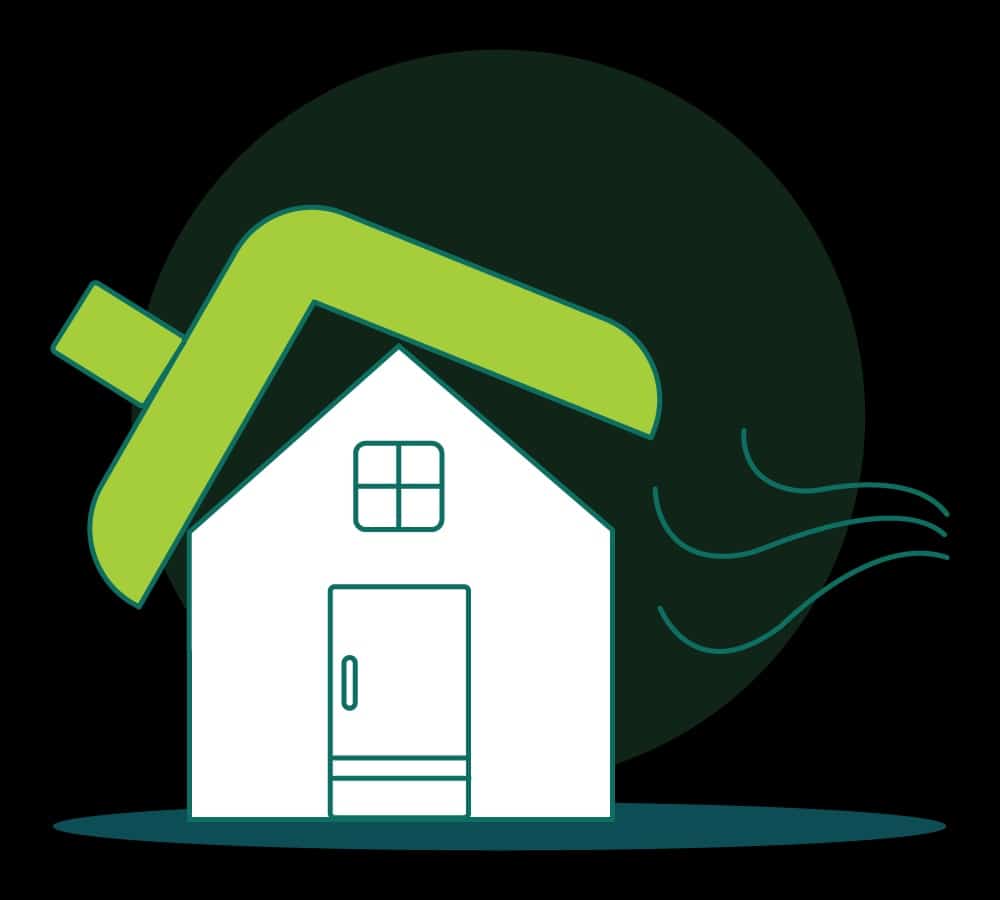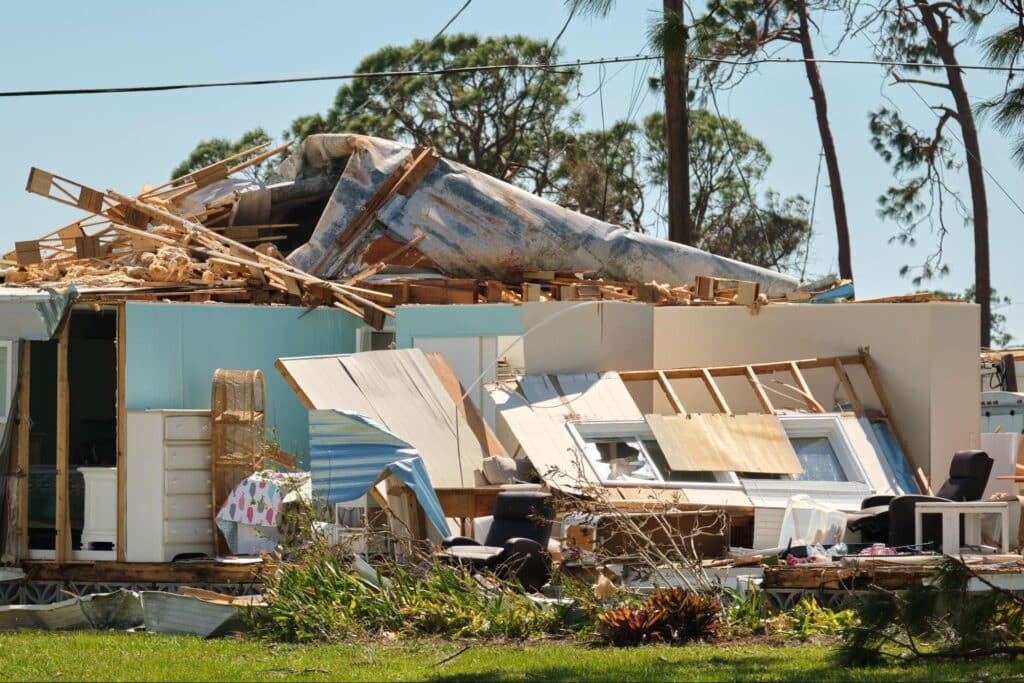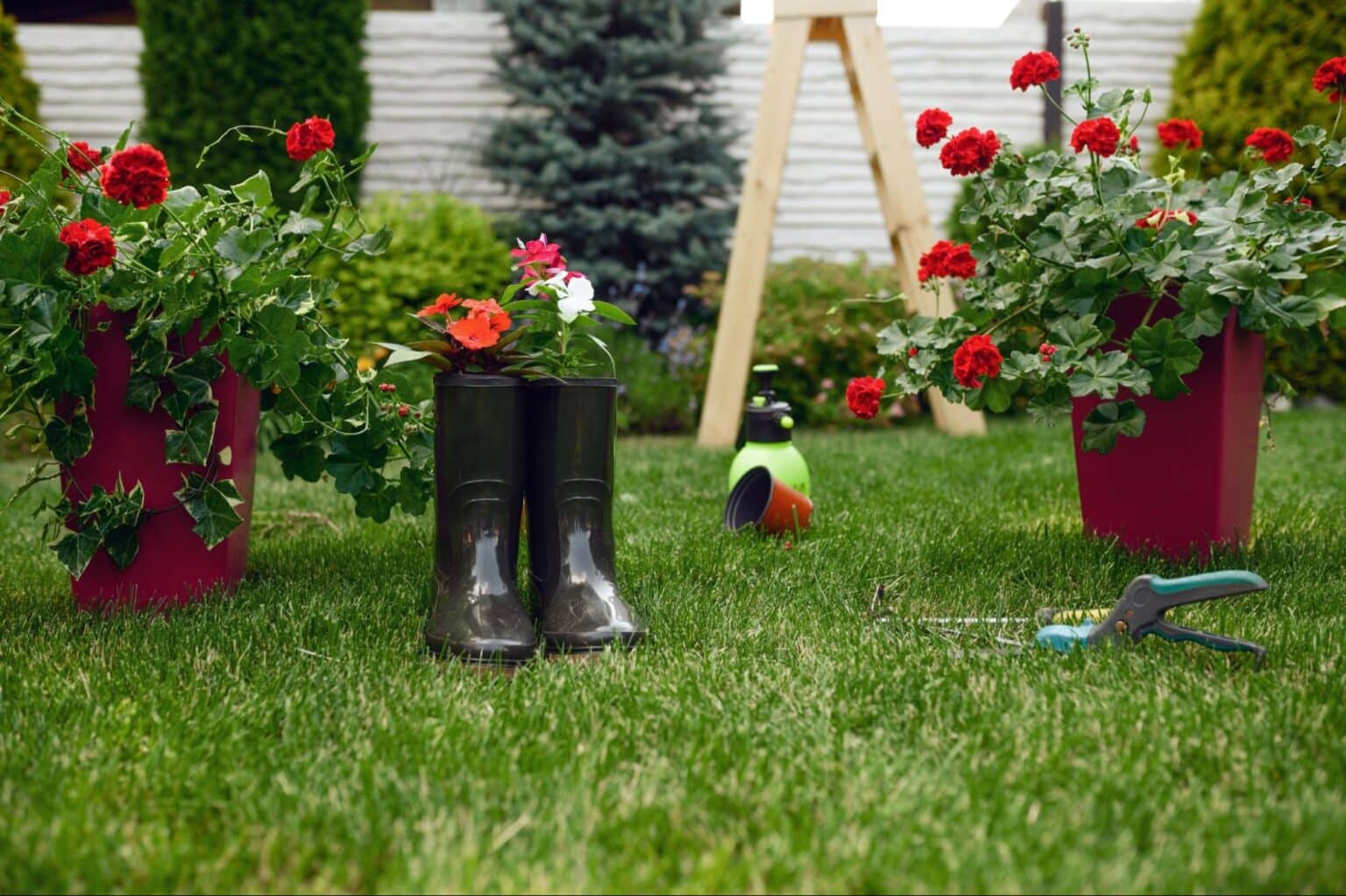When a tornado strikes unexpectedly, the aftermath can be overwhelming. How can you swiftly navigate the chaos to ensure your family’s safety and begin rebuilding your home? This comprehensive guide provides essential tornado recovery steps for homeowners to effectively manage the immediate aftermath, protect their families, and start the rebuilding process with confidence and resilience.
1. Ensure Immediate Health and Safety
Your first priority during tornado recovery is the health and safety of you and your loved ones.
- Check for Injuries: Carefully assess yourself and each household member for any injuries. Administer first aid where necessary. For serious injuries, call emergency services immediately.
- Avoid Immediate Hazards: Be vigilant for sharp debris, broken glass, or unstable structures that could cause harm. Do not touch downed power lines or exposed electrical wiring to prevent electrocution or further accidents.
- Beware of Gas Leaks: If you smell gas or suspect a leak, evacuate the area immediately and notify the authorities. Do not use matches, lighters, or operate electrical switches to avoid potential fires or explosions.
- Stay Informed: Keep tuned to emergency alerts and weather updates through a battery-powered radio or mobile device. Additional storms or hazards may follow the initial tornado, and staying informed is crucial for ongoing safety.
2. Communicate Effectively with Loved Ones
In times of crisis, effective communication is vital for coordinating safety and support.
- Reach Out: Contact family and friends to let them know you’re safe. Use phone calls, text messages, or social media platforms to communicate your status and check on others.
- Establish Communication Channels: If cell service is unreliable, consider alternative methods like local community networks or emergency radios to stay connected with your loved ones.
- Plan for Further Emergencies: Discuss a communication plan with your loved ones in case of additional severe weather events. Establish meeting points and backup communication strategies to ensure everyone stays connected.
3. Assess and Document Property Damage

Once it’s safe, assessing the damage to your property is a critical step in tornado recovery.
Inspecting Your Home
- Exterior Examination: Carefully walk around your home to inspect the roof, walls, windows, and foundation. Look for structural damages such as cracks, missing shingles, or broken windows.
- Interior Check: Inside, check for signs of water damage, such as damp walls or ceilings, and inspect utilities for any leaks or malfunctions.
- Utility Systems: Ensure that electrical systems, gas lines, and plumbing are functioning properly. If anything seems amiss, shut off utilities if you’re trained to do it. Contact professionals if necessary.
Documenting Damage
- Photographs and Videos: Use a camera or smartphone to take clear, time-stamped photos and videos of all damage. Capture both wide shots and close-ups for detailed evidence.
- Detailed Notes: Write descriptions of the damage, noting specific locations and any hazards. This information is vital for insurance claims and repair estimates.
- Keep Records Safe: Store this documentation securely, either digitally in cloud storage or in a safe physical location, to ensure it remains accessible throughout the recovery process.
- Inventory of Lost Items: Create a comprehensive list of lost or damaged personal belongings, including descriptions and estimated values, to support your home insurance claims.
4. Navigate Insurance Claims Efficiently
A critical aspect of tornado recovery is managing the insurance claims process effectively.
- Report the Damage: Contact your insurance agent or company as soon as possible to report the incident promptly. Early reporting helps in faster claim processing.
- Provide Documentation: Share the photos, videos, and notes you’ve collected to support your claim. Comprehensive documentation ensures accuracy and fairness in settlements.
- Understand Your Coverage: Review your policy to understand what is covered, such as structural repairs, personal property, and temporary living expenses if your home is uninhabitable.
- Schedule an Adjuster Visit: Coordinate with your insurer to have an insurance adjuster assess the damage in person. Their evaluation is essential for determining the extent of coverage and necessary repairs.
- Keep a Communication Log: Maintain a detailed record of all communications with your insurance company, including dates, times, and the names of representatives you speak with. This log can be invaluable if disputes arise.
- Work with Your Adjuster: Communicate clearly and provide all necessary documentation to your insurance adjuster. Being cooperative and organized can facilitate a smoother claims process.
5. Prevent Further Property Damage
Taking proactive steps can prevent additional losses during tornado recovery.
- Temporary Repairs: Secure your home by covering damaged roofs with tarps, boarding up broken windows, and sealing leaks to prevent water intrusion. This can mitigate further damage from weather exposure.
- Safety First: Only perform repairs that are safe for you to do. Do not attempt major fixes that could put you at risk of injury or further property damage.
- Keep Receipts: Save receipts for any expenses incurred during temporary repairs, as they may be reimbursable under your insurance policy. Detailed financial records ensure you are compensated for all necessary actions taken.
6. Consider Hiring Professional Restoration Services
Professional help can be invaluable in recovering from extensive tornado damage.
- Find Reputable Companies: Look for licensed and insured restoration services with experience in disaster recovery. Professional restorers can handle debris removal, structural repairs, mold remediation, and more.
- Assess Services Offered: These professionals efficiently manage cleanup and repairs, allowing you to focus on rebuilding your life.
- Insurance Coordination: Many restoration companies work directly with your insurance company to streamline the claims and repair process, ensuring faster recovery.
- Obtain Multiple Estimates: Before committing to a restoration company, get multiple estimates to ensure you receive fair and competitive pricing for services rendered.
7. Nurture Your Mental and Emotional Well-being
The emotional impact of a tornado can be profound and long-lasting.
- Acknowledge Your Feelings: It’s normal to experience stress, anxiety, or grief after such an event. Recognize these emotions in yourself and your family members as a natural response to trauma. According to the Cambridge University Press, between 20% and 40% of survivors develop post-traumatic stress disorder (PTSD) following natural disasters like tornadoes.
- Seek Support: Talk openly with loved ones about your experiences. Early psychological interventions such as trauma-focused cognitive behavioral therapy can reduce the incidence of PTSD in disaster survivors. Consider reaching out to support groups or mental health professionals for additional help.
- Maintain Routines: When possible, keep to regular routines to provide a sense of normalcy, especially for children who may find stability comforting during recovery.
- Limit Media Exposure: Continuous exposure to news about the disaster can increase stress. Stay informed but take breaks from media coverage to protect your mental health.
8. Leverage Independent Insurance Agents for Customized Solutions
Having the right insurance support is crucial in tornado recovery. Independent agents offer personalized service and can tailor insurance packages to your specific needs. Their independence allows them to provide unbiased advice and access to a wide range of insurance products. Consider utilizing their services for a better-tailored recovery plan.
- Customized Coverage: They have access to a vast network of providers, allowing them to find policies that offer the best protection for your situation, ensuring comprehensive coverage tailored to your home’s unique requirements.
- Community Commitment: Independent agents often have strong ties to their communities and actively participate in disaster recovery efforts, providing empathetic and timely support.
- Ongoing Support: Independent agents can assist with adjustments to your coverage as needed, ensuring your insurance evolves with your needs.
- Better Rates: Independent agents have access to a vast range of insurance providers and can find policies that offer better rates for the coverage you need.
Take A Step Towards Recovery for Today and Tomorrow
Recovering from a tornado is a challenging journey, but you don’t have to navigate it alone. By taking these essential tornado recovery steps, you can ensure your safety, protect your property, and begin the process of rebuilding with confidence and resilience.
For personalized support and to ensure comprehensive coverage, reach out to an independent insurance agent today and take the first step toward restoring your home and peace of mind.



